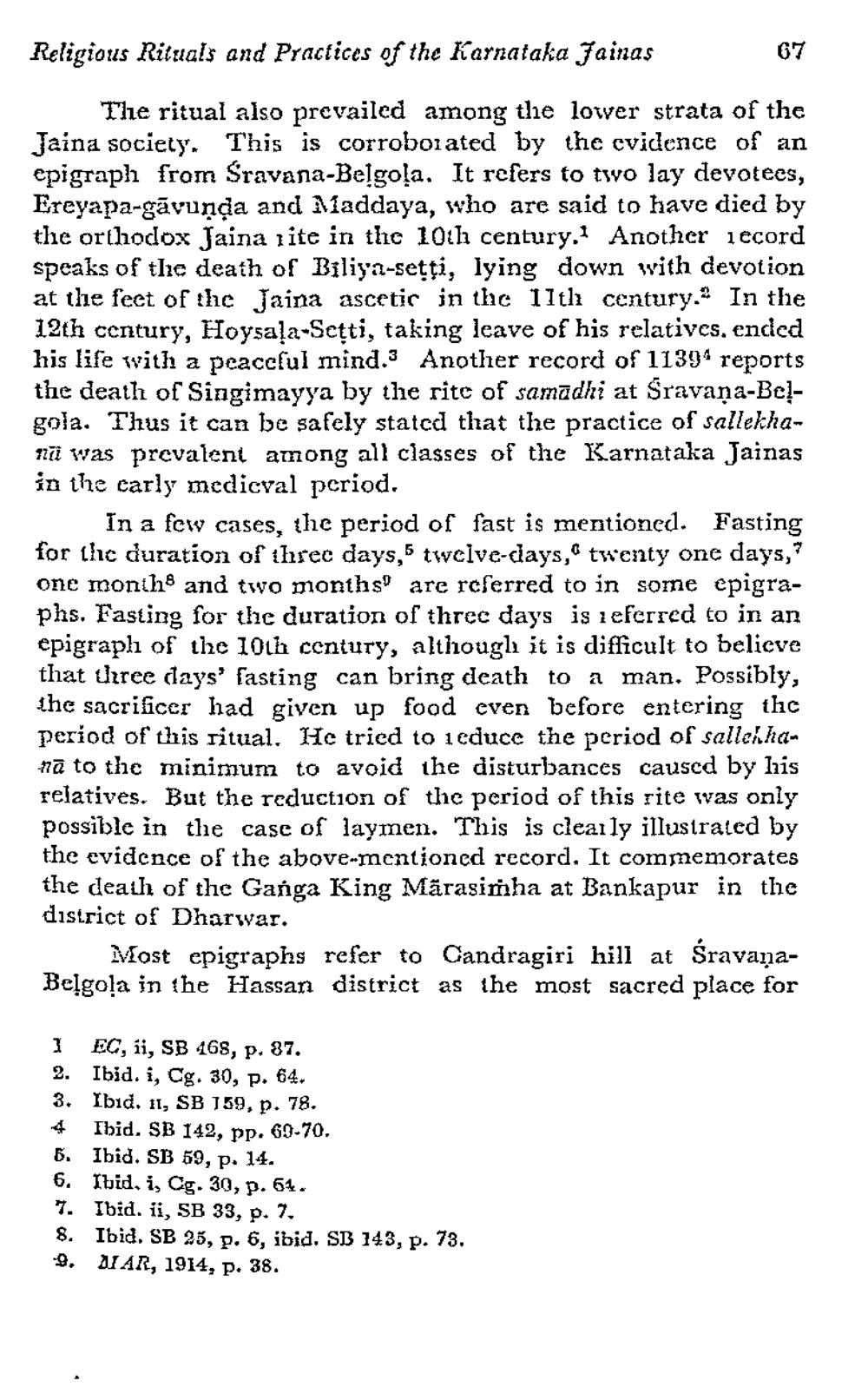________________
Religious Rituals and Practices of the Karnataka Jainas
67
The ritual also prcvailed among the lower strata of the Jaina society. This is corroborated by the cvidence of an epigraph from Sravana-Belgola. It refers to two lay devotees, Ereyapa-gāvuņda and Maddaya, who are said to have died by the orthodox Jaina 1 ite in the 10th century. Another iecord speaks of the death of Biliya-setti, lying down with devotion at the feet of the Jaina ascetic in the 17th century. In the 12th century, Hoysaļa-Scţti, taking leave of his relatives, ended his life with a peaceful mind.3 Another record of 11394 reports the death of Singimayya by the rite of samadhi at Sravana-Belgola. Thus it can be safely stated that the practice of sallekha17 was prevalent among all classes of the Karnataka Jainas in the carly medicval period.
In a few cases, the period of fast is mentioned. Fasting for thc duration of three days, 5 twelve-days, twenty one days, one months and two months are referred to in some epigraphs. Fasting for the duration of threc days is referred to in an epigraph of the 10th century, although it is difficult to believe that Urree days' fasting can bring death to a man. Possibly, the sacrificer had given up food even before entering the period of this ritual. He tried to ieduce the period of sallehhan 17 to the minimum to avoid the disturbances caused by his relatives. But the reduction of the period of this rite was only possible in the case of laymen. This is clearly illustrated by the evidence of the above-Inentioned record. It commemorates the death of the Ganga King Mārasimha at Bankapur in the district of Dharwar.
Most epigraphs refer to Candragiri hill at SravanaBelgola in the Hassan district as the most sacred place for
1 EC, ii, SB 468, p. 87. 2. Ibid. i, Cg. 30, D. 64. 3. Ibid. 11, SB 159, p. 78. 4 Ibid. SB 142, pp. 69-70. 6. Ibid. SB 59, p. 14. 6. Ibid, i, Cg. 30, p. 61. 7. Ibid. ii, SB 33, p. 7. 8. Ibid. SB 25, p. 6, ibid. SB 143, p. 73. 9. MAR, 1914, p. 38.




